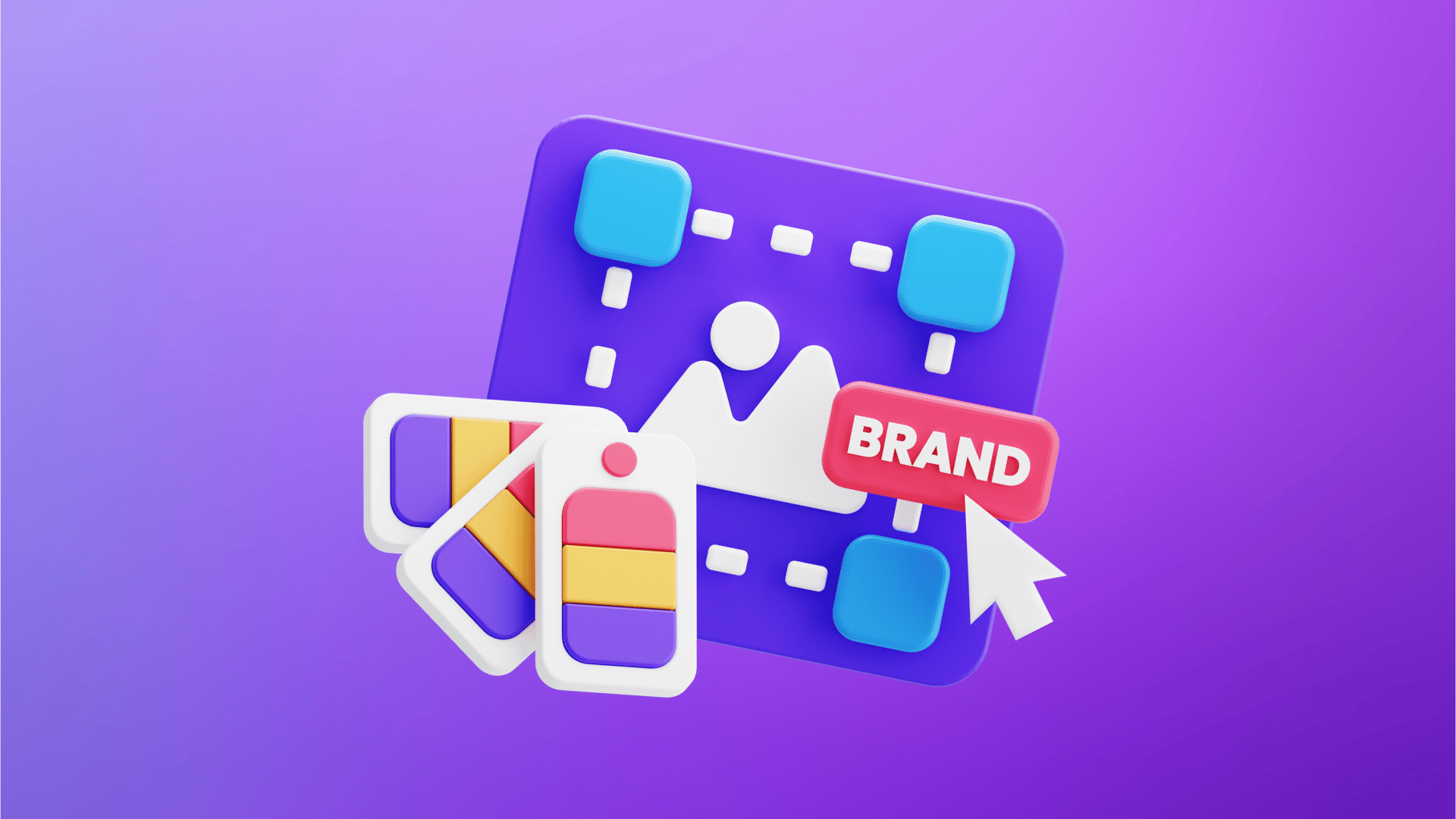The top spot in Google search results gets more than 25% of all clicks, while the second position only manages 15%. Mobile internet users reached 6.47 billion in 2023. These numbers make SEO web design more significant than ever to reach those top rankings.
Website optimization goes beyond just looking good. Google’s algorithm evaluates more than 200 factors to rank websites. A successful SEO-friendly design needs both technical expertise and user experience knowledge. The stakes are high – 42% of people leave websites that don’t work well. This makes it necessary to become skilled at the latest design strategies.
This piece will show you the best SEO web design techniques for 2025. You’ll learn about mobile-first optimization and AI-powered tools that can help your website reach that number one spot in search results.
Core Technical Requirements for 2025 SEO
Building an SEO-optimized website needs specific technical requirements that search engines use to review and rank content. Mobile traffic makes up 59.45% of all web traffic globally. Technical optimization has become more significant than ever to search visibility.
Mobile-First Index Changes in 2025
Search engines now use the mobile version of websites to index and rank content. Google’s mobile-first indexing looks at your site’s smartphone version through its smartphone agent. Sites that don’t work on mobile risk becoming non-indexable. Your mobile site must have the same content, metadata, and structured data as your desktop version.
Core Web Vitals Updates
Core Web Vitals are at the heart of how search engines measure user experience. These metrics look at ground user experience through three key components:
- Largest Contentful Paint (LCP): Must occur within 2.5 seconds of page load start
- Interaction to Next Paint (INP): Should be less than 200 milliseconds
- Cumulative Layout Shift (CLS): Must maintain a score below 0.1
Google has introduced a new metric called Engagement Reliability (ER). This metric measures how consistently users can interact with your website without running into obstacles. The new addition brings site performance closer to ground user behavior.
New Browser Compatibility Standards
Browser compatibility has become a vital ranking factor. The World Wide Web Consortium (W3C) and Internet Engineering Task Force (IETF) create common standards for all browsers. These standards define specifications for JavaScript, HTML, and CSS to ensure consistency on all devices and browsers.
Testing across different browsers is essential because each browser has its specific features. Your websites must work smoothly whatever browser people use. Browser compatibility affects user engagement metrics directly, which search engines use to measure quality.
Your search engine optimization web design must have responsive layouts, quick JavaScript execution, and proper viewport settings to perform well in 2025. Tools like Google Search Console help you spot and fix mobile usability issues, Core Web Vitals metrics, and mobile-specific crawl errors.
AI-Powered SEO Website Design Tools
AI has changed SEO web design by a lot. Recent data shows 84% of bloggers and SEO specialists say AI and automation shaped their SEO strategy. We used advanced algorithms and natural language processing to make this happen.
Automated Content Optimization
AI-powered SEO tools have changed how we create and optimize content. These tools check webpage performance and content quality to suggest improvements in ranking factors like backlinks, keywords, and user experience. Teams using AI save 12.5 hours every week, which adds up to 25-26 extra working days per year.
AI algorithms crunch huge amounts of data to:
- Identify high-value keywords and topic clusters
- Suggest improvements for content structure
- Create internal links automatically
- Generate schema markup recommendations
These tools improve content optimization through semantic analysis and natural language processing. This helps line up content with search engine algorithms and what users want.
Real-Time SEO Analysis Features
Live SEO analysis tools keep track of how your website performs. These platforms give instant feedback on everything in SEO website design, especially when you have:
- Technical audits for millions of URLs
- Constant rank tracking on all devices
- Backlink monitoring to find new chances
The best AI SEO tools connect smoothly through APIs and connectors. These tools don’t replace humans – they make our work better through smart automation and show opportunities we might miss on our own.
AI-powered tools look at many things at once: keyword density, metadata, readability, and semantic relevance. They adjust their priorities based on user behavior and demographics to personalize content suggestions. They can even create metadata based on live analysis of user behavior and search trends.
AI in SEO friendly web design helps with images too. The tools suggest alt text and image tags with relevant keywords that boost content visibility in image searches. This complete approach to SEO analysis will give websites an edge in search results while delivering value to users.
Voice Search Optimization Techniques
Voice search has changed how users interact with search engines. Over 70% of Google voice searches now use natural language patterns. Users’ behavior requires a new approach to search engine optimization web design that focuses on conversational interactions and natural language understanding.
Conversational UI Implementation
A good conversational interface starts with understanding how users phrase their voice queries. Voice searches are longer and sound more natural. People speak complete phrases instead of typing short commands. Someone might say “What’s the weather like in New York City today?” rather than typing “weather NYC”. This behavioral change requires specific UI elements:
- Natural language query handling
- Question-based navigation structures
- Voice-activated search components
- Context-aware response systems
- FAQ-optimized content structures
FAQ sections have become the life-blood of seo friendly web design. These sections work as central information hubs that line up with voice query patterns because they match natural conversation flows.
Natural Language Processing Integration
Natural Language Processing (NLP) is the foundation of effective voice search optimization. Modern search engines use advanced NLP techniques to understand conversational queries. This technology helps search engines process complex queries, identify context, and give responses that sound human.
NLP integration in seo website design has several important parts. The system uses named entity recognition (NER) to identify and classify text entities into predefined categories. Semantic analysis then finds related concepts and topics to give a complete coverage of user queries.
Websites need structured data markup to perform well in voice search. This technical setup helps search engines grasp the context of content and improves visibility in voice search results. Schema markup, especially FAQ Schema, will give a boost to content visibility in voice search results.
Content structure determines how well NLP integration works. Content engineers create different versions of content using advanced NLP models. Websites can then respond better to various phrasings of the same query, which improves voice search results.
Testing and optimization play a significant role in voice search optimization. Seo website builder platforms can maintain high performance through continuous monitoring and adjustment of NLP implementations. Yes, it is an ongoing process that keeps websites current with changing voice search patterns and user behaviors.
Performance Optimization Methods
Performance optimization leads search engine optimization web design today. Edge computing and content delivery networks are changing how websites deliver content to users. Studies reveal that advanced edge computing networks can reach 95% of the world’s Internet-connected population within 50 milliseconds.
Edge Computing Benefits
Edge computing boosts seo website design by moving data through cloud technology connected to worldwide data centers. A distributed network structure makes data transfer faster and reduces latency. Websites store infrastructure in the cloud and access it through interconnected data centers. This setup eliminates the need to fetch content from far-away origin servers. Faster page loads and better Time To First Byte (TTFB) result from this approach, which significantly affects search rankings.
CDN Architecture Updates
Content delivery networks play a vital role in seo friendly web design and offer several advantages:
- Geographically distributed servers reduce latency
- Content stays available through redundancy
- DDoS mitigation improves website security
- Cached content cuts bandwidth costs
Modern CDN architectures use tiered caching strategies and smart routing technology. Cache Reserve eliminates egress fees and provides multiple layers of resiliency. Traditional caching methods still work well, but modern CDNs now use advanced protocols like HTTP/3 and QUIC to make content delivery even better.
Server-Side Rendering Impact
Server-side rendering (SSR) changes how search engines work with web content. Search engine crawlers can access website content more efficiently with SSR, which makes indexing better. The rendering process turns code into interactive webpages that users can use right away. This quick delivery particularly helps seo website builder platforms.
SSR’s effect on web design and seo goes beyond simple performance metrics. Well-implemented SSR cuts page rendering downtime and speeds up transitions between pages. The server gets better user metrics by collecting information about navigation patterns. Search engines value this data more in their ranking algorithms as it helps optimize user interface and experience.
SSR also affects First Contentful Paint (FCP), which helps users with slower internet connections interact with webpages faster. All the same, good implementation needs careful planning of server resources. Bigger applications might take longer to load initially when rendered.
Materials and Methods for Implementation
Creating SEO-friendly web designs requires a mix of development tools, testing frameworks, and deployment methods. Web designers need the right tools to build websites that are intuitive, cohesive, and rank well in search results.
Required Development Tools
The right development platforms form the foundation of successful SEO website design. WordPress remains the top choice to design and build affordable websites. Wix and Webflow provide strong code-free options that excel in design flexibility and animation features.
GitHub has become a vital development tool with its version control and collaboration features. Teams can track changes, automate CI/CD operations, and manage projects through its graphical interface. Visual Studio Code offers a portable development environment, while Sublime Text works best for coding beginners.
Testing Frameworks
SEO testing frameworks are vital to website optimization. A well-laid-out testing approach includes:
- Page Performance Metrics: Track Core Web Vitals
- Technical SEO Validation: Confirm metadata and schema implementation
- Cross-browser Compatibility: Ensure consistent rendering
- Mobile Responsiveness: Test across different devices
- Content Optimization: Confirm keyword implementation
Google’s PageSpeed Insights and Semrush’s Site Audit provide detailed testing capabilities. These platforms analyze technical aspects and offer practical recommendations to improve. Regular monitoring helps maintain performance after implementation.
Deployment Strategies
Deployment strategies should match both technical needs and SEO goals. Docker and Kubernetes are essential tools for application containerization and orchestration. These tools help quick deployment and scaling across environments.
Content delivery networks (CDNs) play a significant role in deployment. Setting up proper caching mechanisms and using progressive loading techniques ensures optimal performance during implementation. This approach improves crawling efficiency and user experience.
Regular evaluation helps maintain SEO effectiveness. Systematic planning, execution, and professional team support drive sustained growth in SEO-friendly web design. Automated testing procedures help spot problems before they affect search rankings.
Results from Early Adopters
Modern SEO practices have shown powerful results in measuring web design success. Data reveals that organic traffic makes up 53% of all trackable website traffic. This shows how much proper SEO can affect a website’s performance.
Traffic Growth Metrics
Companies that use complete SEO website design strategies see big improvements in their organic reach. Organic traffic shows that websites work properly and reach more people. Sites that do this right grow by 10-20% each month. This means many more people can find and visit these websites.
SEO web design does more than just boost traffic numbers. Sites that focus on E-E-A-T principles rank higher in search results. They get better rankings by:
- Showing professional credentials
- Using credible references
- Keeping content fresh and relevant
- Creating strong industry connections
Conversion Rate Changes
SEO-friendly web design leads to better conversion numbers. Most industries see conversion rates of 2-3%, but this changes based on the field. Entertainment and arts websites get click-through rates of 10.76%, while legal websites average 3.84%.
Of course, first-party data collection helps boost conversion rates. Companies that use SEO website builders can now collect:
- Email sign-ups
- Survey responses
- Direct customer feedback
- User behavior patterns
B2B websites that load in 1 second convert three times better than those taking 5 seconds. This speed boost associates with better user engagement and retention. Sites with good technical SEO also see more completed checkouts.
Web design and SEO optimization show up in many conversion metrics. Sites with quality content keep users around longer as they learn about relevant information. On top of that, sites with consistent business information across directories get more local conversions.
Google Analytics shows whether organic conversions bring in the right visitors. Low conversions with high traffic often mean keyword targeting doesn’t match the client acquisition funnel. Companies can look at which keywords bring visits and adjust their content to match what users want at each stage of their buying experience.
System Limitations and Constraints
SEO-friendly web design needs a deep understanding of technical constraints that affect website performance. We focused on limitations that come from browser differences, device capabilities, and available resources.
Browser Support Issues
Browser compatibility remains the biggest challenge in search engine optimization web design. Each browser uses its own rendering engine:
- Chrome/Edge: Chromium engine
- Safari: WebKit
- Firefox: Gecko
Platform differences create inconsistent content display. Even browsers that use similar engines might show different results because their Chromium builds often vary. Browser’s default typefaces cause layout variations, which makes font rendering challenging.
JavaScript’s compatibility adds more complexity to SEO website design. Some browsers support fewer CSS styles than others, which affects how websites work on different platforms. Browsers update frequently – sometimes 8-10 times a year. This makes consistent functionality hard to maintain.
Device Compatibility Challenges
Mobile compatibility brings its own set of obstacles for web design and SEO implementation. Websites need visual stability on screens of all sizes, as shown by cross-device testing. Even with responsive design in place, touch-screen functionality needs extra attention. Small button sizes can make websites hard to use.
Technical limits show up when implementing mobile-specific features. To name just one example, Flash compatibility problems led 97% of users to abandon the technology. Modern websites now need alternative interactive solutions that work well on all devices.
Resource Requirements
Building effective SEO website solutions needs substantial resources. Cross-browser testing needs complete evaluation matrices. SEO implementation needs investment in:
Testing Infrastructure:
- Browser testing platforms
- Device simulation tools
- Performance monitoring systems
Development Resources:
- Specialized team members
- Technical expertise
- Regular maintenance support
Modern SEO web design requires regular device audits. Optimal performance depends on continuous monitoring of Core Web Vitals and user engagement metrics. Some organizations might need specialized testing services to ensure complete coverage on different browsers and devices.
Mobile optimization needs careful resource planning. Research shows 61% of users leave mobile sites after bad experiences. On top of that, 40% of these users go to competitor websites. These numbers show why mobile optimization needs proper resources.
File formats and device compatibility need careful planning during technical implementation. Search engines favor websites that give users the best experience. This makes cross-browser and cross-device testing essential to stay competitive in rankings.
Implementation Timeline and Roadmap
SEO web design implementation just needs a structured approach with distinct phases. A well-laid-out timeline will give a proper resource allocation and systematic execution of each component.
Phase 1: Technical Foundation
The original phase builds core infrastructure and fundamental SEO elements. Keyword research and content architecture are the foundations of website structure. This groundwork takes 4-6 weeks and has sitemap creation and navigation planning.
The technical foundation phase has several significant components:
- Site Architecture Development
- Creation of logical content hierarchies
- Implementation of clear navigation structures
- Setup of proper URL architecture
- Configuration of XML sitemaps
This phase needs close collaboration between web developers and SEO specialists. The development team works on visual aspects, while the SEO team makes sure content lines up with search engines.
Phase 2: Advanced Features
The second phase brings sophisticated functionality and improved SEO capabilities. This stage runs for 8-10 weeks and focuses on advanced technical elements. This phase has:
- Content Management System optimization
- Schema markup implementation
- Internal linking structure development
- Mobile responsiveness improvement
The focus moves toward creating a balance between esthetics and search engine requirements during this phase. Regular testing makes sure everything works well across different devices and browsers.
Phase 3: Optimization
The final phase fine-tunes and improves performance. This stage runs for 6-8 weeks and has detailed testing and optimization. Beyond technical refinements, this phase has:
Performance Monitoring:
- Core Web Vitals tracking
- Mobile usability assessment
- Cross-browser compatibility verification
Content Refinement:
- Quality assessment
- Keyword optimization
- User experience improvement
This phase ended up establishing ongoing maintenance protocols. Regular audits become vital to maintain optimal performance and fix emerging problems quickly.
The implementation timeline needs careful resource allocation planning. Success depends on:
Development Resources:
- Specialized team members
- Technical expertise
- Regular maintenance support
Testing Infrastructure:
- Browser testing platforms
- Device simulation tools
- Performance monitoring systems
Clear communication between development and SEO teams is vital throughout the implementation process. Regular progress monitoring helps spot and fix potential bottlenecks early.
The timeline should stay flexible to adjust for:
- Technical challenges encountered
- Resource availability
- Market changes
- Search engine algorithm updates
Clear milestones and deliverables for each phase are equally important. This structured approach makes sure technical requirements and SEO objectives line up throughout implementation.
A successful SEO website design implementation needs constant monitoring and adjustment. Regular evaluation of key performance indicators helps maintain optimal functionality and search engine visibility. On top of that, it helps to use automated testing procedures to spot potential issues before they affect search rankings.
The implementation roadmap should have provisions for:
- Regular security updates
- Performance optimization
- Content freshness
- Technical maintenance
This detailed approach makes sure the website stays competitive in search rankings while giving users the best experience. Setting up clear protocols for ongoing maintenance and optimization becomes vital for long-term success.
Conclusion
SEO web design has grown by a lot beyond simple HTML and CSS. Our detailed analysis shows how technical requirements, AI tools, voice search optimization, and performance methods combine to help websites rank better in 2025.
The numbers tell an impressive story. Websites using modern SEO practices get 25% more clicks in top positions and their bounce rates drop by 42%. These results show how proper SEO directly impacts business growth.
Your website needs:
- Mobile-first design that optimizes Core Web Vitals
- AI-powered content tools that enhance optimization
- Natural voice interfaces ready for search
- Edge computing and CDN setup
- Regular testing on different devices and browsers
You can overcome technical hurdles with good planning and the right resources. A three-phase rollout over 18-24 weeks builds a clear path to better search visibility.
The future of SEO web design demands quick responses to new search algorithms and changing user habits. Your rankings stay competitive when you test, watch, and improve your site regularly to give users what they need.
Author
-

Managing Director of one of Australia's leading Digital Marketing Agencies... With over 7+ years of hands on experience in SEO, managing both national & international organisations SEO strategy and campaign distribution. Having won several international awards (Search Awards, Clutch, TechBehemoth etc.) for both paid media and search campaign success... He is a front runner in leading search and defining the playbook for the Australian market.
View all posts











